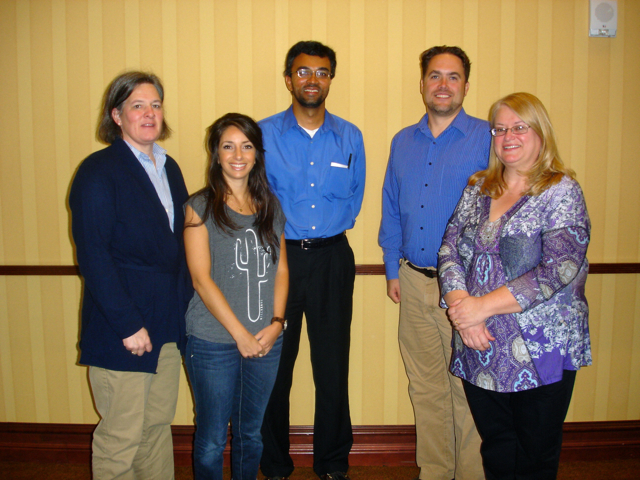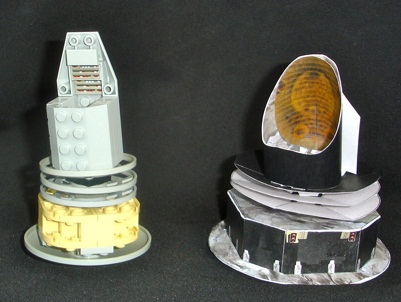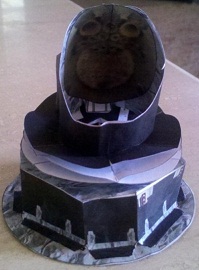Difference between revisions of "Cold Spotz Current Research Activities"
| (16 intermediate revisions by the same user not shown) | |||
| Line 3: | Line 3: | ||
=[[Cold Spotz Suggested Reading List]]= | =[[Cold Spotz Suggested Reading List]]= | ||
| − | + | =[[Cold Spotz Proposal]]= | |
| + | This page will be used to assemble the pieces for the proposal we are writing. See [[2012 proposal instructions]] for, well, instructions! | ||
| − | =[[Cold Spotz | + | =[[Cold Spotz Spring work]]= |
| − | + | =[[Coldspotz June Visit to Pasadena]]= | |
| + | =[[AAS Poster Work]]= | ||
| − | = | + | =Miscellaneous= |
| − | |||
| − | |||
| − | |||
[[File:PlanckModel04.jpg]] [[File:IMG_7380.jpg]] | [[File:PlanckModel04.jpg]] [[File:IMG_7380.jpg]] | ||
| Line 25: | Line 24: | ||
Project #3: One Jansky is the flux density you receive if you hold a 60W light bulb at what distance? | Project #3: One Jansky is the flux density you receive if you hold a 60W light bulb at what distance? | ||
| − | + | Project #4: Take a look at Topic 5 on the Suggested Reading List | |
| − | + | ||
| − | + | Project #5: February 27, 2012: There are 4 planets visible in the night sky - Jupiter, Mercury, Venus and Mars. Try to spot them. Mercury and Venus will be visible around sunset - Why? Jupiter and Mars will be visible through most of the evening. Use the | |
| − | + | relative motion of the planets (i.e. the angular separation between the planets) to infer how far they are from us. | |
| − | + | ||
| − | + | Project #6: The sun is red in the morning, whitish/yellow in the middle of the day and red again in the evening. Since color is related to temperature, does that mean the Sun is changing in temperature? No. Difference in color is due to light of a particular frequency being scattered away by the dust/molecules in the atmosphere. A dust grain most efficiently scatters wavelengths of its own size. There are more small grains than large grains, so shorter wavelengths (blue) get scattered more than larger wavelengths (red). | |
| − | + | ||
| − | 7. | + | Project #7: If a star had a 40AU dust shell around it and was at a distance of 10pc what would the size of the dust shell be? Would it be extended as seen by WISE? No. It would be 4 arcsec while WISE has a spatial resolution of 12 arcsec at wavelengths where it can see dust emission. |
| + | If a galaxy of radius 10 kpc was at a distance of 10 Mpc, would it be extended as seen by WISE? Yes. It would be 412 arcseconds in diameter. | ||
| + | |||
| + | Wasnt that solar eclipse on May 20th cool? | ||
Latest revision as of 01:12, 25 September 2012
Contents
Cold Spotz Suggested Reading List
Cold Spotz Proposal
This page will be used to assemble the pieces for the proposal we are writing. See 2012 proposal instructions for, well, instructions!
Cold Spotz Spring work
Coldspotz June Visit to Pasadena
AAS Poster Work
Miscellaneous
Project #1: Build your Planck model: The paper parts for a Planck model can be found at [1]. Kat's model (the one furthest to the right above) actually has the reflection of the focal plane in the mirror the correct way up.
Project #2: Launch costs: What is the relationship between launch cost and satellite size is. Does it cost more to go where Planck is, or to go where television satellites are, or to go where the international space station is?
Project #3: One Jansky is the flux density you receive if you hold a 60W light bulb at what distance?
Project #4: Take a look at Topic 5 on the Suggested Reading List
Project #5: February 27, 2012: There are 4 planets visible in the night sky - Jupiter, Mercury, Venus and Mars. Try to spot them. Mercury and Venus will be visible around sunset - Why? Jupiter and Mars will be visible through most of the evening. Use the relative motion of the planets (i.e. the angular separation between the planets) to infer how far they are from us.
Project #6: The sun is red in the morning, whitish/yellow in the middle of the day and red again in the evening. Since color is related to temperature, does that mean the Sun is changing in temperature? No. Difference in color is due to light of a particular frequency being scattered away by the dust/molecules in the atmosphere. A dust grain most efficiently scatters wavelengths of its own size. There are more small grains than large grains, so shorter wavelengths (blue) get scattered more than larger wavelengths (red).
Project #7: If a star had a 40AU dust shell around it and was at a distance of 10pc what would the size of the dust shell be? Would it be extended as seen by WISE? No. It would be 4 arcsec while WISE has a spatial resolution of 12 arcsec at wavelengths where it can see dust emission. If a galaxy of radius 10 kpc was at a distance of 10 Mpc, would it be extended as seen by WISE? Yes. It would be 412 arcseconds in diameter.
Wasnt that solar eclipse on May 20th cool?


